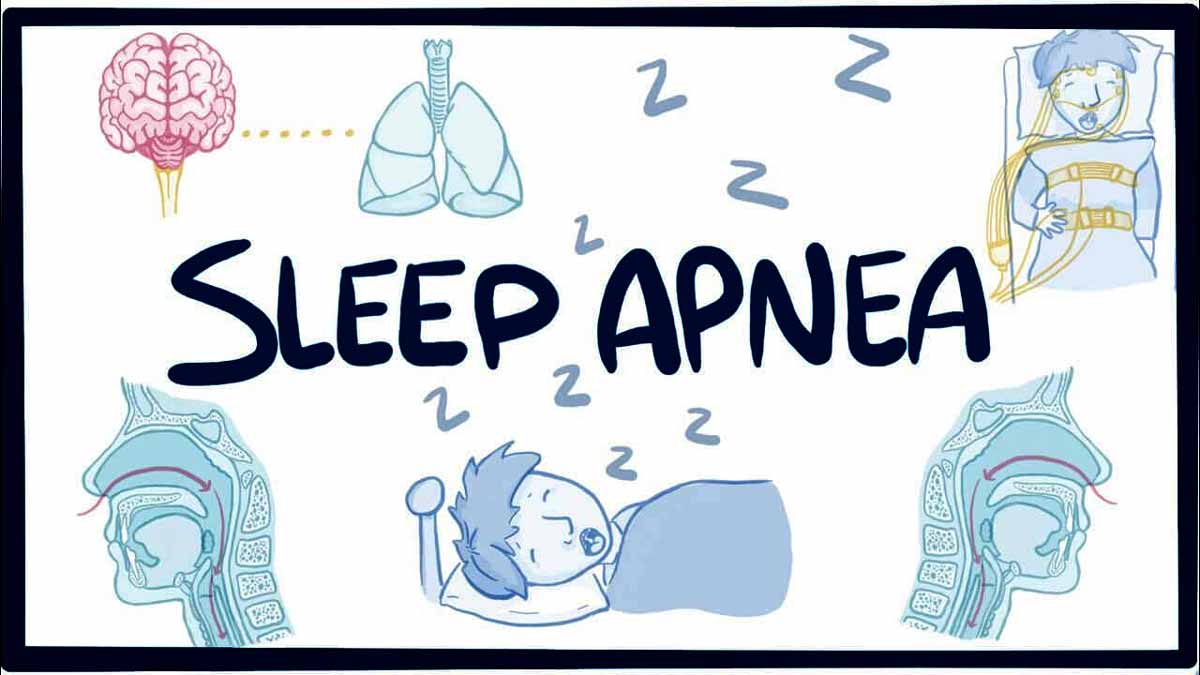- Home
- Editorial
- News
- Practice Guidelines
- Anesthesiology Guidelines
- Cancer Guidelines
- Cardiac Sciences Guidelines
- Critical Care Guidelines
- Dentistry Guidelines
- Dermatology Guidelines
- Diabetes and Endo Guidelines
- Diagnostics Guidelines
- ENT Guidelines
- Featured Practice Guidelines
- Gastroenterology Guidelines
- Geriatrics Guidelines
- Medicine Guidelines
- Nephrology Guidelines
- Neurosciences Guidelines
- Obs and Gynae Guidelines
- Ophthalmology Guidelines
- Orthopaedics Guidelines
- Paediatrics Guidelines
- Psychiatry Guidelines
- Pulmonology Guidelines
- Radiology Guidelines
- Surgery Guidelines
- Urology Guidelines
Hypoglossal nerve stimulation may improve sleep quality in sleep apnea patients: JAMA

Obstructive sleep apnea (OSA) is a potentially serious sleep disorder with a damaging impact on the quality of life of the patient. Hypoglossal nerve stimulation (HSN) has emerged as an alternative therapy for OSA patients who do not show any improvement after continuous positive airway pressure (CPAP) or could not adhere to the therapy. In a recent study. researchers have found that hypoglossal nerve stimulation may reduce sleep apnea severity and improve sleep quality in OSA patients. The results were published in the JAMA, official journal of American Medical Association.
The study looked at demographic factors that may be associated with greater improvements in postoperative outcomes after hypoglossal nerve stimulation. The authors pooled patient-level data from m 3 prospective cohorts and 1 retrospective observational cohort comprising 584 adults with moderate to severe obstructive sleep apnea unable to tolerate or benefit from CPAP. The data were gathered from the Stimulation Therapy for Apnea Reduction Trial; a postmarket approval study conducted in Germany; the multicenter, international Adherence and Outcome of Upper Airway Stimulation for OSA Registry; and a retrospective cohort study from 2 sites in the United States.
Main outcomes that were measured were: Severity of obstructive sleep apnea, apnea-hypopnea index (AHI) (<5, normal; 5-15, mild; 15-30, moderate, and >30, severe), Epworth Sleepiness Scale (range, 0-24; score >10 indicates pathologic sleepiness) taken at 2 to 6 months from 2 cohorts, at 12 months from 1 cohort, and at both times from 1 cohort, . Sleep-related quality of life and oxygen saturation nadir data were collected where available. Linear mixed-effects models were constructed to examine associations between clinical variables and reported postoperative outcomes at 6 and 12 months with the study included as a random effect.
Key findings of the study are as follows:
- Of the 584 patients included in the study, 472 were men; mean (SD) age was 58.5 years.
- Greater improvement in the postoperative AHI was associated with a higher preoperative AHI, older patient age, and lower body mass index (BMI).
- After adjusting for these variables and considering all patients in the analysis, the AHI was statistically higher at 12 months than at 6 months.
The results of the study made the authors conclude "Hypoglossal nerve stimulation demonstrated clinically significant improvements in obstructive sleep apnea severity, daytime sleepiness, and sleep-related quality of life in this pooled cohort of patient-level results. Age, body mass index, and preoperative AHI appeared to be associated with treatment outcomes, and these variables may explain some of the difference between 2- to 6-month and 12-month outcomes."
For more details, click on the link
doi:10.1001/jamaoto.2019.2723

Disclaimer: This site is primarily intended for healthcare professionals. Any content/information on this website does not replace the advice of medical and/or health professionals and should not be construed as medical/diagnostic advice/endorsement or prescription. Use of this site is subject to our terms of use, privacy policy, advertisement policy. © 2020 Minerva Medical Treatment Pvt Ltd